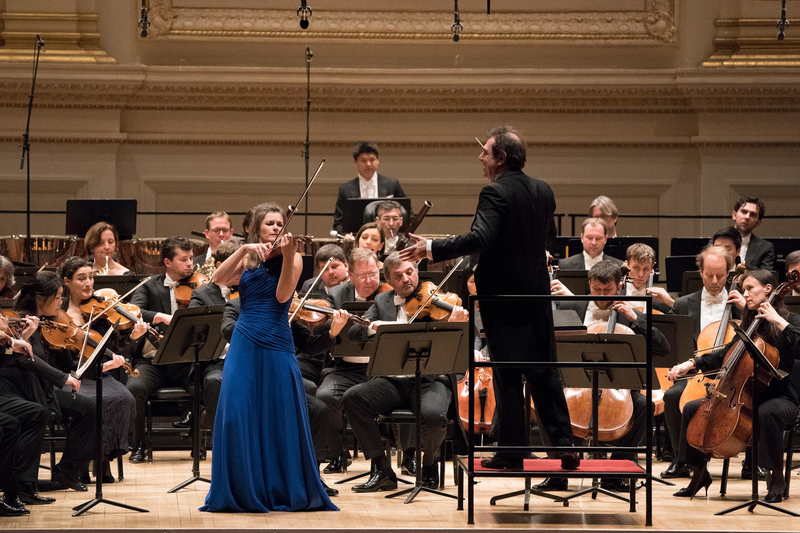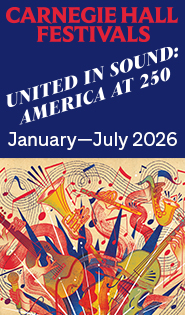Jansen provides the highlight in an uneven night for the Royal Concertgebouw

Janine Jansen performed Bruch’s Violin Concerto No. 1 with Daniele Gatti and the Royal Concertgebouw Orchestra Thursday night at Carnegie Hall. Photo: Richard Termine
Carnegie brings the best orchestras in the world to New Yorkers’ doorsteps. When a storied ensemble like the Royal Concertgebouw Orchestra comes to town, there’s an exceptional excitement about it and a memorable concert is just about a given. And while there was some very fine playing on their Thursday night program, the second of a brief two-concert stand at Carnegie this year, it didn’t come where you might expect.
Janine Jansen is herself in the middle of a mini-residency at Carnegie Hall, curating one of the “Perspectives” series this year. Bruch’s Violin Concerto No. 1 (the only one of his three in the genre that ever sees the light of day) is an odd choice for such a prominent concert. It’s a fine Romantic piece, though it lacks the emotional punch of the Brahms or Sibelius concertios on the one hand, and the technical fireworks of the Paganini or Wieniawski on the other. A diminutive piece at just 20 minutes, it is a good deal shorter than any other major violin concerto.
In any case, Jansen made an excellent argument for the piece, playing with precision and flair. She gave a poised reading of the first movement, but one that smoldered too, employing a fat vibrato and long, fast bow strokes. She brought warm affection to the Adagio in an uncomplicated but lovely reading, finding clarity in the flowing passages. And the Finale had exactly the right spirit, a sunny, rustic romp, with a brilliant, chirping tone.
The Concertgebouw, under their chief conductor, Daniele Gatti, gave a superb accompaniment in the concerto, creating a raging storm in the background of the first movement, and vigorously pounding the downbeats of the last.
For an encore, she offered “Nana” from Manuel de Falla’s Suite Espagnole, a ghostly lament with pining melodic touches, assisted by members of the orchestra.
The Concertgebouw’s performance of Mahler’s Symphony No. 1, sadly, proved less rewarding.
The exceptional qualities of the Concertgebouw were certainly apparent–power, shining strings, and, for the most part, polish. Yet the opening of the symphony—an astonishing development of complex sounds and ideas out of nothing—was surprisingly disorganized. Once they got to the brilliant moment of flight, the music was exhilarating, but the progression leading there was difficult to follow. Sour tuning in the brass, a problem throughout the symphony, helped little.
Their best playing in the Mahler came in the second movement, where the stomping whirl of the dance contrasted brilliantly with the contented calm of the trio. The slow movement started well enough, its funeral march layered beautifully so that each voice spilled into the next. But the humor of the folk elements seemed totally lost on Gatti, making the playful march of winds and percussion sound more like a regimental band than a klezmer troupe.
The finale, though energetic, lacked balance. As in the opening movement, the climactic moments were expertly realized, glorious explosions of bright sound; but without a clear path in the motivic development that got us there, the shining conclusion seeming just an isolated moment of dramatic brilliance without much of a context.


